 I’m working my way through the top ten books on the 2011 Great Graphic Novels for Teens, one of which is the late Aristophane’s The Zabîme Sisters (First Second). It follows three girls from Guadeloupe through their first day of summer vacation, and it does so with a degree of clarity, honesty, and restraint that’s quite surprising and very refreshing.
I’m working my way through the top ten books on the 2011 Great Graphic Novels for Teens, one of which is the late Aristophane’s The Zabîme Sisters (First Second). It follows three girls from Guadeloupe through their first day of summer vacation, and it does so with a degree of clarity, honesty, and restraint that’s quite surprising and very refreshing.
Bossy M’Rose wants to watch a fight between the school bully and one of his targets. Attention-hungry Célina wants to hang out with some girlfriends. Timid Ella just seems to want as pleasant and peaceful a day as she can manage. They cross paths with classmates who have their own agendas and concerns. Manuel is trying to figure out what to do about his father’s broken pipe. Euzhan has smuggled some rum out of the house to share with her girlfriends. Some things go well, some go badly, and some just go.
Aristophane’s approach to slice of life is meticulously subdued. His narrative never overpromises, maintaining a steady pace of event but never inflating those moments into more than just moments. It’s a day, not an epic, and there’s comfort and familiarity in the string of anticlimaxes. The pleasure of The Zabîme Sisters is in its simplicity and candor.
Part of that candor comes in the form of sharp little bits of exposition that Aristophane sprinkled throughout the narrative. When Célina joins her family for breakfast, Aristophane offered this narration:
“Célina got up after making them beg her. She took particular pleasure in being pleaded with and in feeling indispensible. When she got this attention first thing in the morning, she felt especially content.”
These bits of omniscience are frank and illuminating, but they’re never intrusive. They add wonderful layers to the events, and they rarely flatter their subjects. Aristophane isn’t mocking his characters, per se, but his assessments are unsparing. But they reveal the emotional complexity of the characters, too, and they add weight and clarity to their actions. It’s a terrifically successful technique, and it lifts the book to a higher level.
The art has the same kind of chunky, inky beauty that I find so appealing in the work of Iou (Sexy Voice and Robo) Kuroda. Just about every panel is absorbing in its own way, with shifting perspectives and an eye-catching haziness. There’s a blend of precision and abstraction that adds interest; you’re always sure of what you’re seeing, but the rendering has enough oddity and expressionism to keep refreshing the way you see it. (Publishers Weekly ran several preview pages from the book.)
I’m actually kind of embarrassed that this book largely escaped my attention before making it onto the top ten list. It’s the kind of thoughtfully inventive work that always excites me, and its unique elements and techniques cohere in really admirable ways.
Other reviews in this intermittent series:
- Set to Sea, written and illustrated by Drew Weing, Fantagraphics
You can nominate titles for the next Great Graphic Novel for Teen List, and you can take a look at the current batch of contenders.





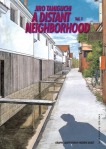


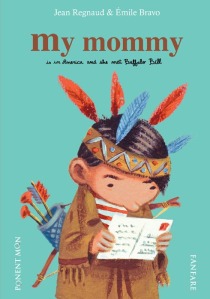

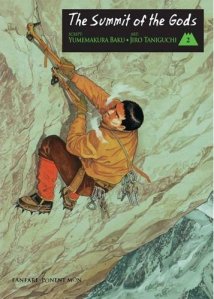
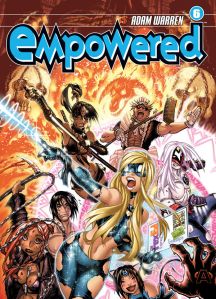
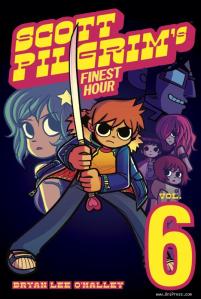


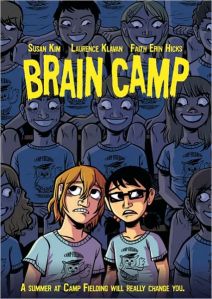




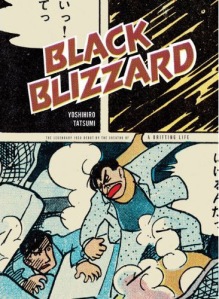







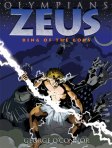

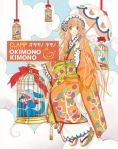 Dark Horse releases
Dark Horse releases  I like Greek Mythology, and I thought George O’Connor’s Journey Into Mohawk Country had a lot of strong points. So I’ll definitely give O’Connor’s
I like Greek Mythology, and I thought George O’Connor’s Journey Into Mohawk Country had a lot of strong points. So I’ll definitely give O’Connor’s 
 I can’t say that Mohiro Kitoh’s
I can’t say that Mohiro Kitoh’s  And now for the new volumes and new editions:
And now for the new volumes and new editions: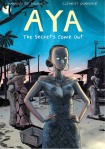 If you haven’t been enjoying Marguerite Abouet and Clément Oubrerie’s charming, multi-generational soap opera about life in the Ivory Coast during the 1970s, then you probably aren’t prepared for
If you haven’t been enjoying Marguerite Abouet and Clément Oubrerie’s charming, multi-generational soap opera about life in the Ivory Coast during the 1970s, then you probably aren’t prepared for  I really enjoyed Danica Novgorodoff’s mini-comic,
I really enjoyed Danica Novgorodoff’s mini-comic, 